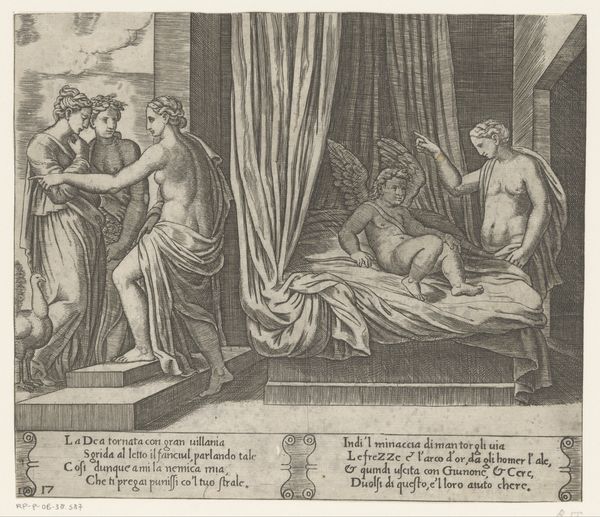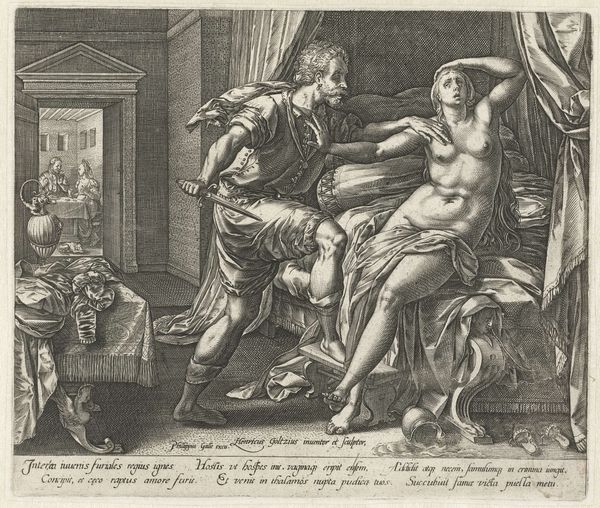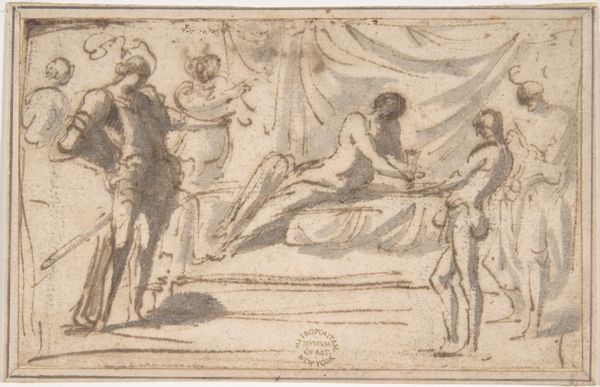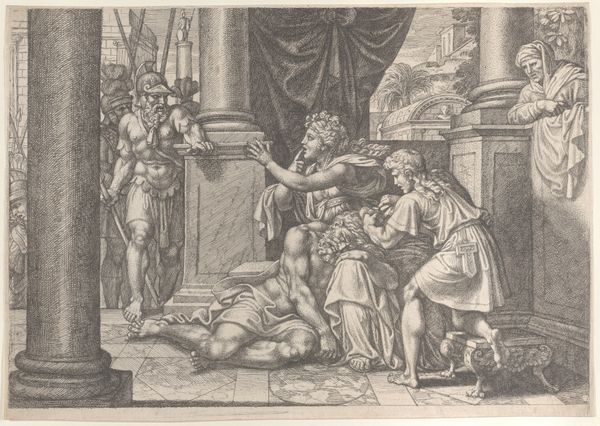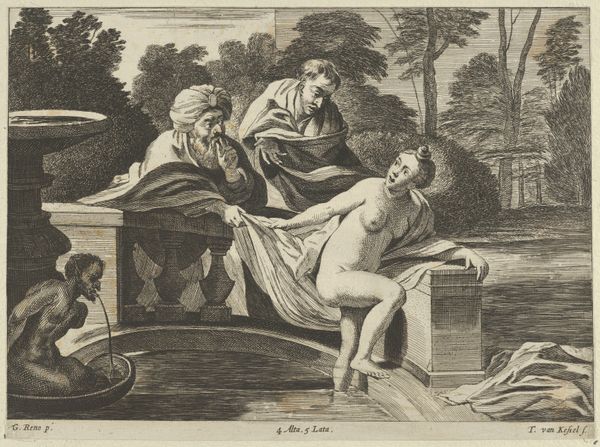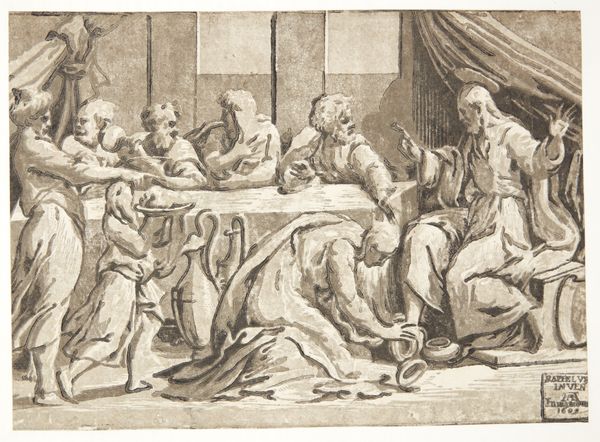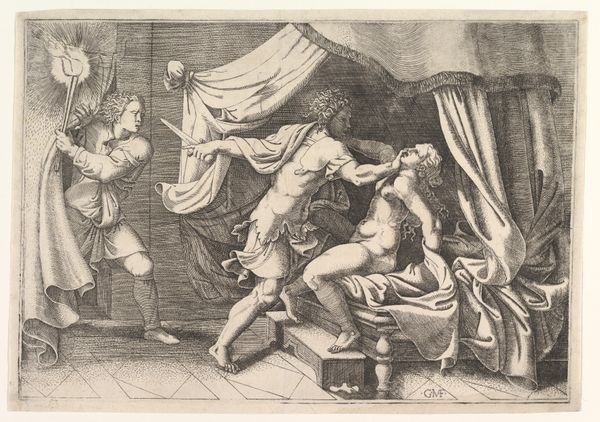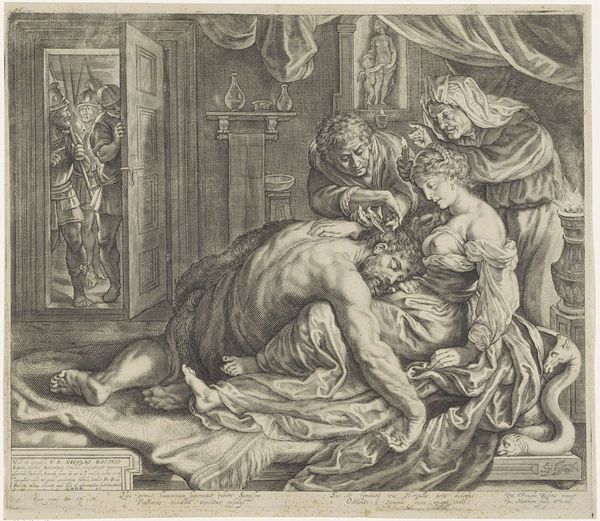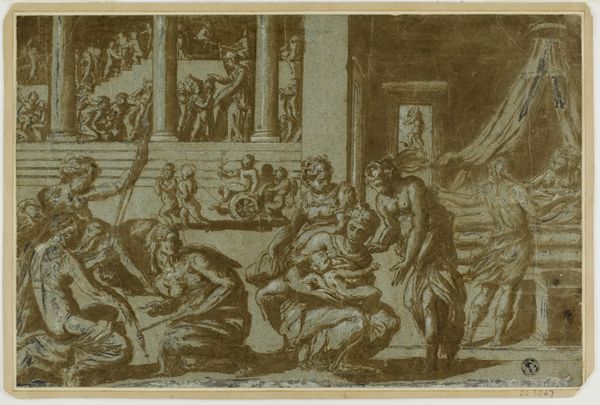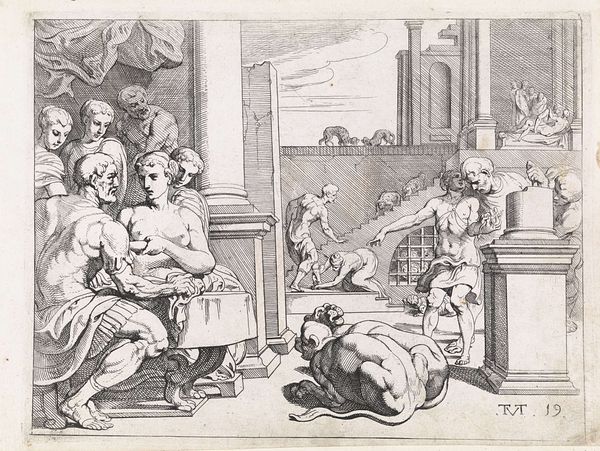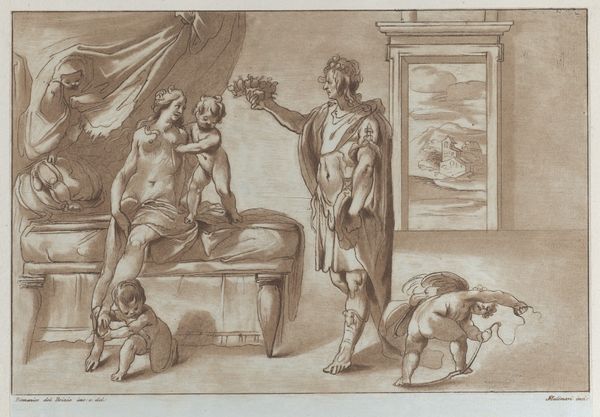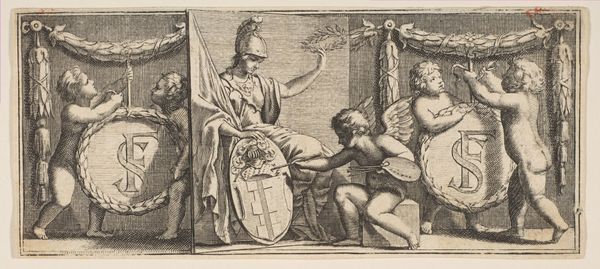
print, engraving
#
narrative-art
#
baroque
# print
#
figuration
#
history-painting
#
engraving
Dimensions: 8 11/16 × 11 in. (22.07 × 27.94 cm) (sheet)15 1/2 × 17 1/2 × 1/2 in. (39.37 × 44.45 × 1.27 cm) (outer frame)
Copyright: Public Domain
Curator: Looking at this engraving, there’s something immediately unsettling in the contrast of vulnerability and drama. Editor: I agree, this piece, created in 1741 by Anton Maria Zanetti the Elder, depicts the Old Testament scene of “Isaac Blessing Esau." The monochrome gives it a certain austerity, wouldn't you say? The shades are a stark contrast to the colorful nature of the Baroque. Curator: Absolutely. And that austerity lends itself well to considering its materiality as a print—an image made accessible through reproducible labor. We’re confronted not with an original mark but one embedded within a system of dissemination. Note, too, the labor embedded in its creation, using materials such as paper and ink which facilitate the wide dispersal of its biblical scene. Editor: True. Zanetti, working in 18th-century Venice, engages with earlier depictions of masculinity and power through this choice of scene. We see Isaac, reclining in his bed, seemingly unaware of the deceit unfolding as Jacob steals the blessing intended for his brother. Esau's rejection is all too visceral here, but what does it tell us about identity and divine choice? Curator: I think that that dichotomy between what we perceive and what is authentic plays with the printmaking medium so perfectly. I also consider the engraver as laborer, transforming a reproductive craft into art through sheer skill—making many nearly identical copies through hours of meticulous work. It questions where exactly creative genius truly resides. Editor: Exactly. Considering the history of such representations—patriarchal inheritance, the positioning of women in the scene observing from a distance. I wonder if a contemporary viewer might respond differently, perhaps questioning these long-standing hierarchies? Curator: Zanetti's strategic use of line and form transforms a simple print into a site brimming with complexity and the interplay of process and power dynamics. Editor: Right. "Isaac Blessing Esau," rendered through this print, becomes not merely a narrative of family deception but an invitation to investigate enduring themes of class, gender, race, and power and how the Bible intersects within our modern context. Curator: I concur; observing Zanetti's focus on disseminating biblical scenes, especially at a time when the world's workforce changed dramatically, reveals something new upon each observation. Editor: Precisely; through an intersectional examination, its engagement speaks directly across time, offering avenues to explore well past its original setting.
Comments
No comments
Be the first to comment and join the conversation on the ultimate creative platform.
